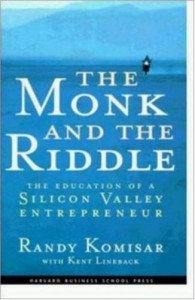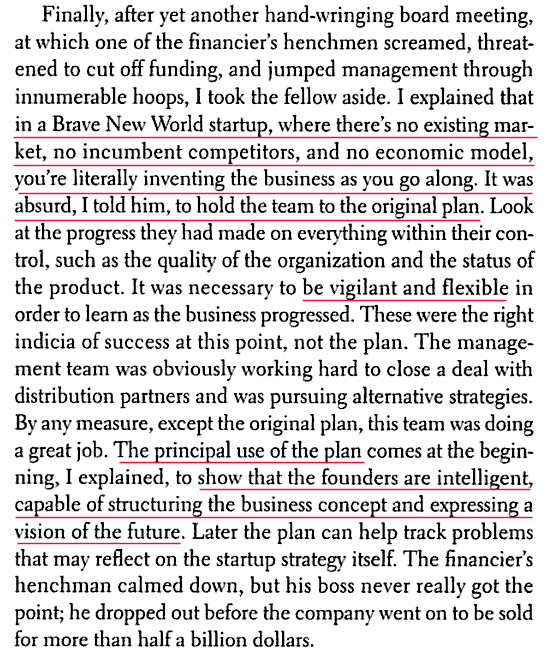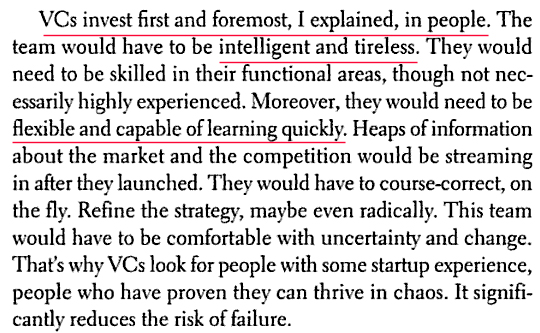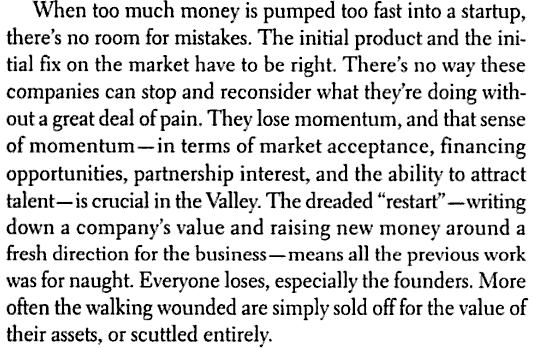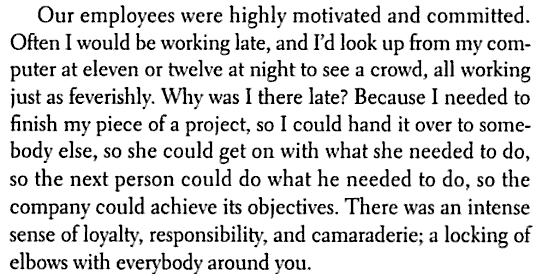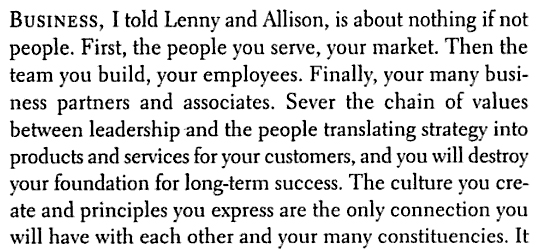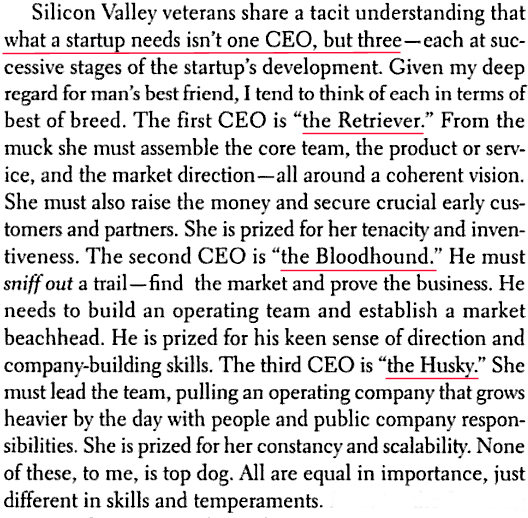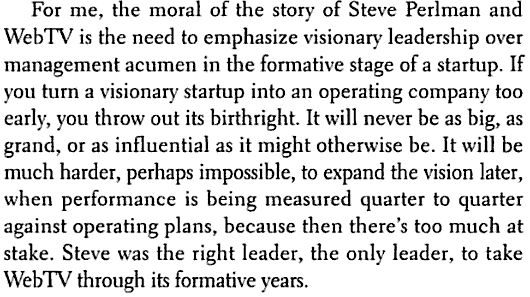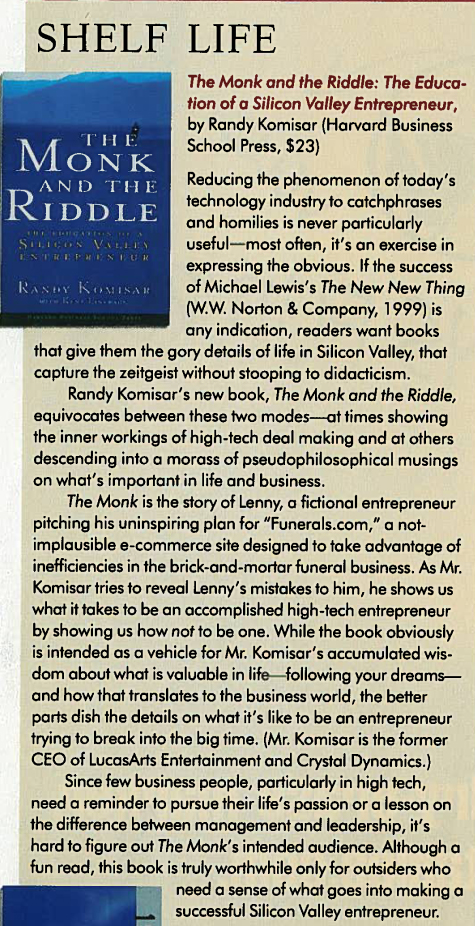Do not ask me why this book is entitled The Monk and the Riddle as I will let you discover it if you decide to read this “old” book (a more than 10 year-old great piece of Silicon Valley description). Its subtitle is clear though: The Education of a Silicon Valley Entrepreneur.
Not all agree on the fact it is a great book as you may find at the end of this post, from the comment by the Red Herring in 2000. Still, I loved reading this book and let me explain why. Randy Komisar, today a partner at Kleiner Perkins and former enrtepreneur, has written a book about passion and inspiration. He does not tell you how to do your start-up (but he tells you how not to do it). He also explains also very well what Silicon Valley is, the locus of risk taking, where failure is tolerated, where a start-up is more a romantic act than a financial endeavour. “Business isn’t primarily a financial institution. It’s a creative institution. Like painting and sculpting.” [page 55] Here are a more few extracts I scanned from Google Books.
First Mr. Komisar explains that an entrepreneur is a flexible visionary and why the business plan does not have to be strictly followed (or should not always be) [page 37]:
Of course, venture capitalists look for such people [page 38]:
But there is a danger with VCs: the down round which is the consequence of failed momentum [page 52]:
Mr. Komisar gives much more than basic advice. Even if he admits he may not have followed these when he was younger, he understands now how important they are. His book his about the meaning of life where he defines the Deferred Life Plan (that should not be followed) [page 65]:
He therefore considers that personal risks are more important than business risks [page 154]:
Personal risks include:
– the risk of working with people you don’t respect,
– the risk of working for a company whose values are inconsistent with your own;
– the risk of compromising what’s important;
– the risk of doing something you don’t care about; and
– the risk of doing something that fails to express – or even contradicts –who you are.
And there is the most dangerous risk of all – the risk of spending your life not doing what you want on the bet you can buy yourself the freedom to do it later.
[… page 156…]
If your life were to end suddenly and unexpectedly tomorrow, would you be able to say you’ve been doing what you truly care about today?
He also explains why Hard Work is a critical and necessary value of Silicon Valley [page 125]:
But People and Culture remain the most important elements [page 128]:
Another interesting concept is the fact that start-ups need 3 CEOS [page 128]:
But nothing replaces Vision [page 144]:
When I wrote above that Silicon Valley is about tolerance to failure [page 150]:
Obviously it means even success should be mitigated [page 151]:
I really advise you to read this great book, not only for the Riddle but also for the nice, funny and sad story of Lenny and Allison. Enjoy!
Here is what the Red Herring published. The analysis is not wrong, but even 10 years later, I am not sure Silicon Valley is so well understood as the RH thought…

